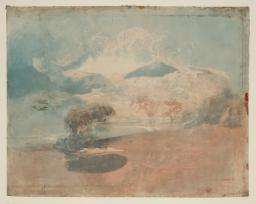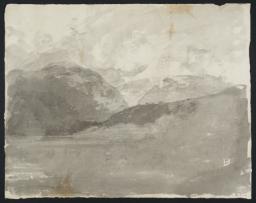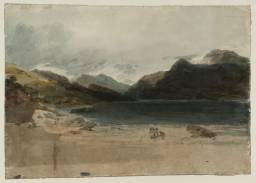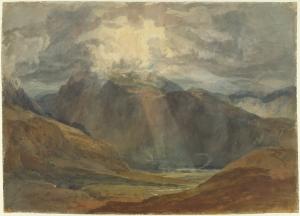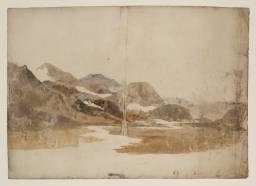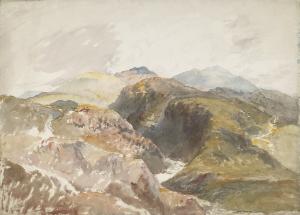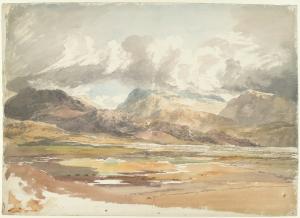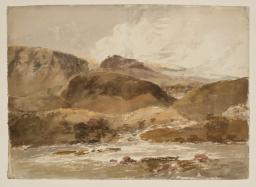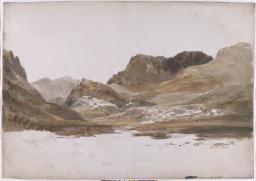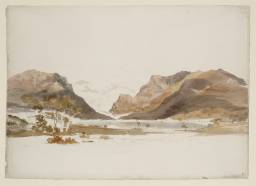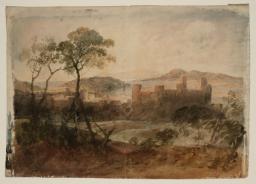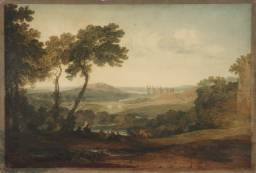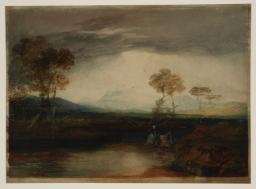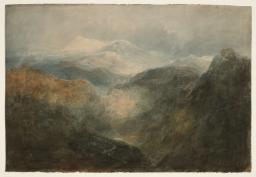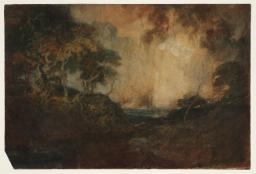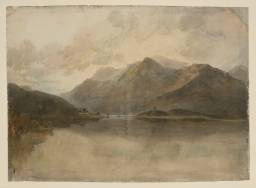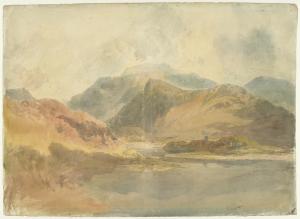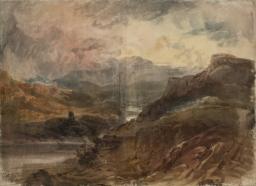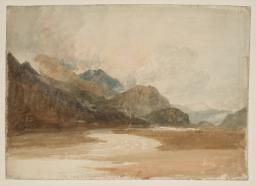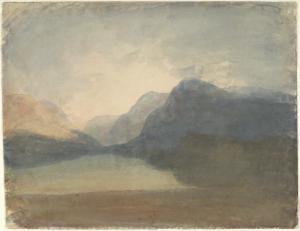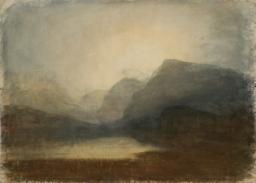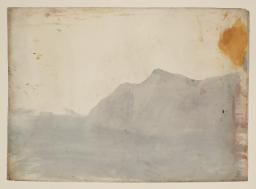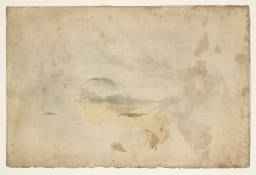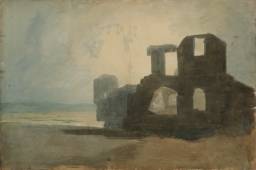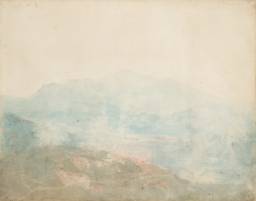Turner Bequest XXXVI U, XLIV D, L L, LX a A, B, C, D, F, G, H, I, J, K, LXX M, N, O, P, Q, U, X, Y, Z, a, c, d, e, h, i, j, CXCVI X
This section comprises a number of very large-scale watercolour studies that are in the nature of highly ambitious experiments or preparatory essays for unrealised pictures, together with a finished work exhibited at the Royal Academy in 1800 (Tate D04164; Turner Bequest LXX M).1 The principal sequence, however, is a series of large studies made or begun, most unusually, on the spot in Snowdonia during Turner’s tour to Lancashire and North Wales in 1799.
When Finberg compiled his Turner Bequest Inventory in 1909, he listed the whole series as Lake District subjects, dating them to 1801 (Turner Bequest section ‘LX (a). – English Lakes’),2 having already placed some of them among ‘Subjects Connected with the North of England Tour’ of 1797 (Turner Bequest XXXVI).3 His confusion is further reflected in his coming, later, to consider them as belonging to a subsequent period, seeing in them affinities with Tate oil sketches that Turner made on the Thames in about 1805 (then thought to date from about 1809).4 He is to be forgiven for the error, since these are among the most precocious and uncharacteristic of all Turner’s watercolour studies, ambitious in scale and in the range of their subject matter, and employing a virtuoso watercolour technique unlike anything practised in the medium hitherto. Although they have now for many years been correctly labelled as subjects in Snowdonia, as Finberg himself eventually recognised, and associated with Turner’s last important Welsh tour in 1799, many of them have proved difficult to identify.
Nevertheless, they stand as some of the most significant of all Romantic watercolours, for their precocious technical accomplishment as well as for their vision of mountain scenery, Turner’s first fully engaged response to the Sublime in landscape. It is no accident that these profound studies are contemporaneous with some of his earliest attempts to express intellectual grandeur in his painting, notable in the pair of watercolours depicting ‘War’ and ‘Peace’ in terms of the (largely mythical) destruction of the Welsh Bards by Edward I; see Tate D04164 and D04168 (Turner Bequest LXX M, Q).
Finberg 1909, I, pp.162–3; the section number is cited in the present entries as ‘LX a’, in accordance with current Tate convention.
Technical notes:
The traces of vertical folding recorded in the case of some of these large sheets are the consequence of the papermakers’ practice of hanging larger sheets over ropes to dry.5 However, these sheets may also have been folded by Turner himself for ease of transport.
How to cite
Andrew Wilton, ‘Drawings Related to the Welsh Tour of 1799 1799–1800’, subset, May 2013, in David Blayney Brown (ed.), J.M.W. Turner: Sketchbooks, Drawings and Watercolours, Tate Research Publication, April 2016, https://www

